The LG G7 Review: A Rushed Attempt?
by Andrei Frumusanu on August 9, 2018 11:00 AM EST- Posted in
- Smartphones
- LG
- Mobile
- LG G7 ThinQ
- LG G7
Camera - Low Light Evaluation
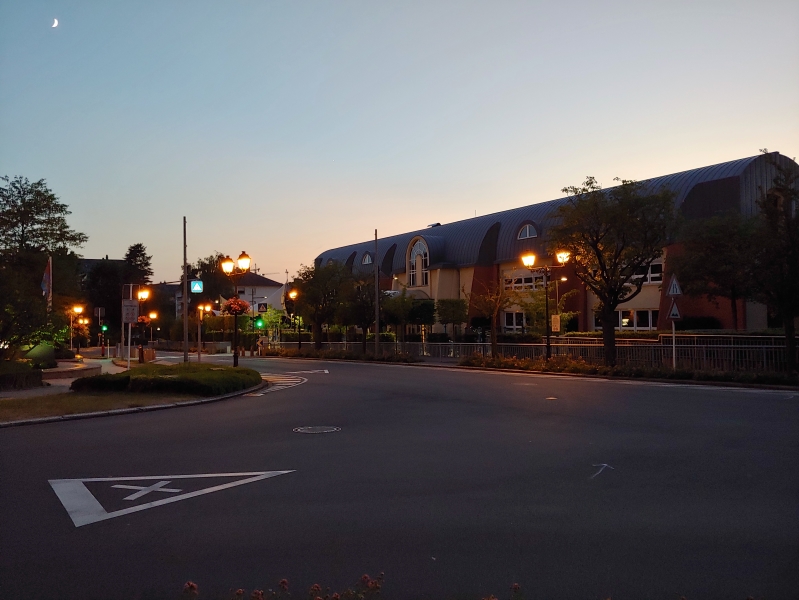
[ G7 ] - [ G6 ] - [ V30 ]
[ Mi MIX 2S ] - [ Pixel 2 XL ] - [ Mate 10 ] - [ P20 ]
[ OnePlus 6 ] - [ P20 Pro ] - [ S8 ] - [ S9+ ] - [ iPhone X ]
Switching over to the low-light scenarios, the first scene already again shows the inconsistency of the G7 in deciding on a good exposure. Although the G7 isn’t really alone here and both the G6 and V30 needed help to point out what the main subject is.
Again coming back and doing an apples-to-apples between the G7 and V30 ( vs shots) which have both respectively 1/25s ISO200 and 1/24s ISO400 – I can’t understand how the G7 manages to produce a much noisier picture even though by all means it should have had the clearer shot due to the lower ISO setting. It also continues to blur out details in a much worse manner.
The only positive here is that the HDR processing did manage to produce a quite good result – at least in shot 1.
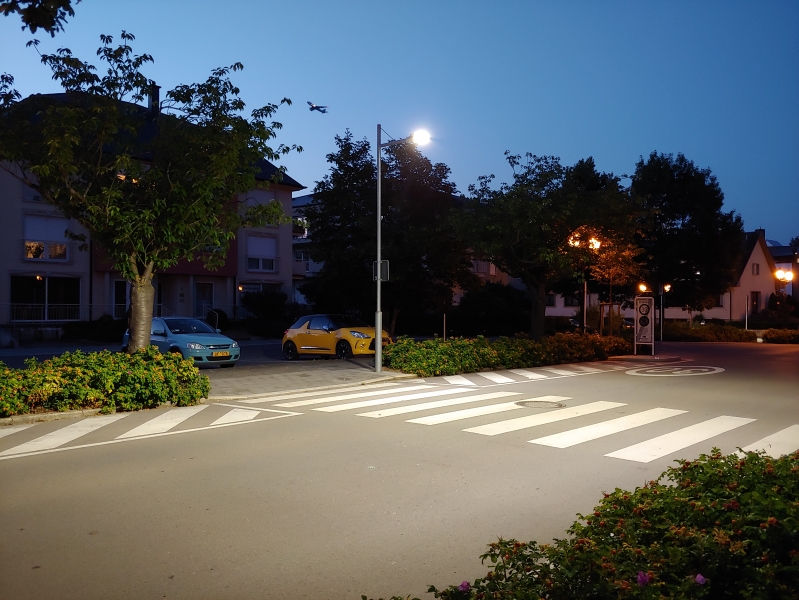
[ G7 ] - [ G6 ] - [ V30 ] - [ Mi MIX 2S ] - [ Pixel 2 XL ] - [ Mate 10 ]
[ P20 ] - [ P20 Pro ] - [ S8 ] - [ S9+ ] - [ iPhone X ]
[ OnePlus 6 ]
The next shot we finally see a result in which the G7 doesn’t obviously blur out the details. The result is quite good overall, although the colour temperature is a tad too warm but that’s also something a lot of phones had trouble with in terms of white street lights.
Here it’s also visible that the 1µm pixel pitch sensor is limiting the dynamic range as the larger sensor phones have better shadow definitions throughout the scene.
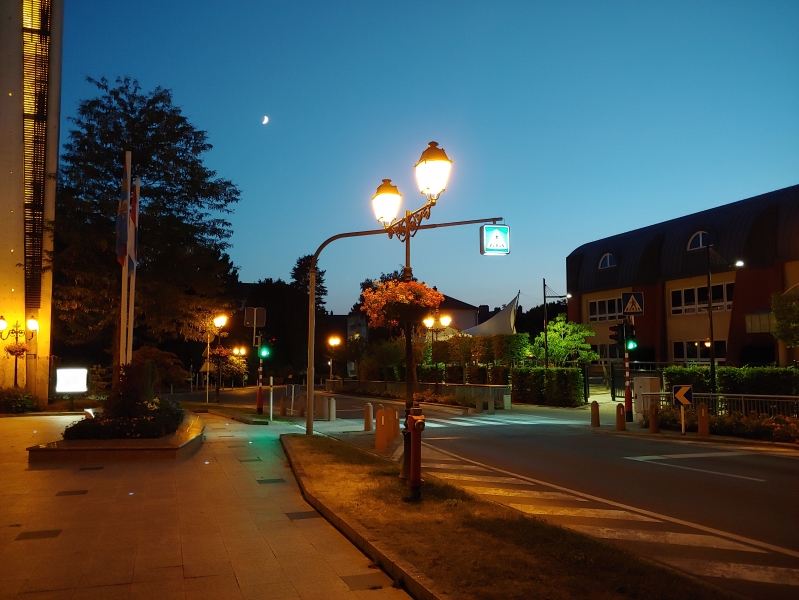
[ G7 ] - [ G6 ] - [ V30 ] - [ Mi MIX 2S ] - [ Pixel 2 XL ]
[ Mate 10 ] - [ P20 ] - [ P20 Pro ]
[ OnePlus 6 ] - [ S8 ] - [ S9+ ] - [ iPhone X ]
Here’s another shot where the G7 doesn’t apply its super harsh water-colour effect, and I would say it’s for once finally a clear winner overall over the V30. The result is actually extremely competitive with most other flagships – while it loses to some out in dynamic range, the overall combination of the exposure and detail retention is pretty balanced.
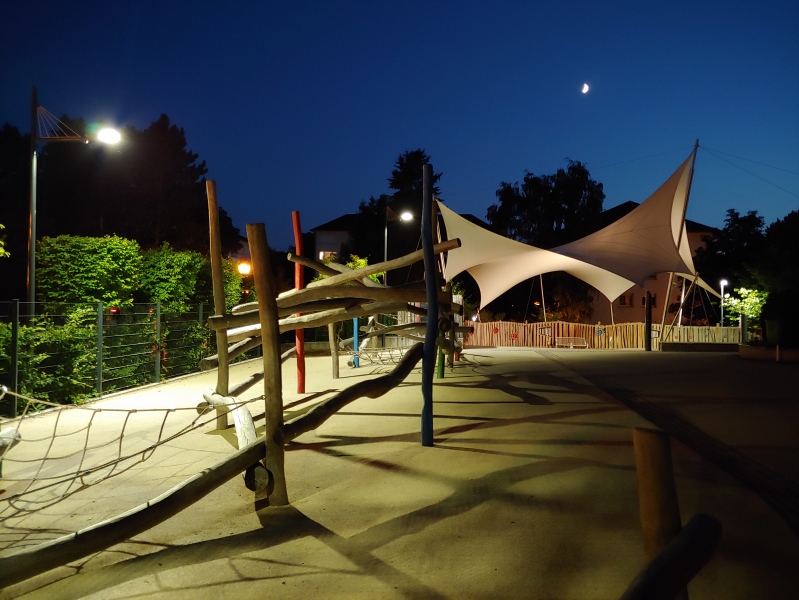
[ G7 ] - [ G6 ] - [ V30 ] - [ Mi MIX 2S ] - [ Pixel 2 XL ]
[ Mate 10 ] - [ P20 ] - [ P20 Pro ]
[ OnePlus 6 ] - [ S8 ] - [ S9+ ] - [ iPhone X ]
In this last low-light shot the one thing that is blatantly wrong is the colour temperature – again this is a regression to the V30, but at least it’s not as awfully off as on the G6.
Please note that both G7 shots were shot at the same settings – 1/14s at ISO750, yet the second shot is far worse and this is probably the single best before-and-after in terms of showing what the processing is doing to the capture. The is the heavily processed one. The phone is attempting to balance out the luminance in the shot but what is happening is it’s also bringing out the noise with it – this is especially visible in the sky.
The compressed rubber turf is naturally porous and here again the G7’s processing just loses all of its texture definition – look at the P20 Pro for the best baseline comparison.
Overall again the G7 regresses in practically every aspect compared to the V30 in this shot.
Extreme Low Light
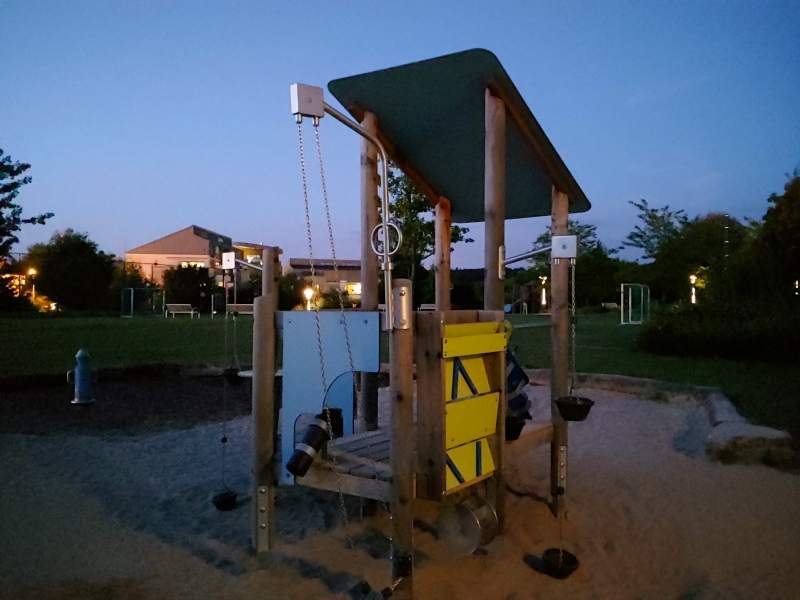
[ G7 ] - [ G6 ] - [ V30 ] - [ Mi MIX 2S ] - [ Pixel 2 XL ]
[ Mate 10 ] - [ P20 ] - [ P20 Pro ]
[ OnePlus 6 ] - [ S8 ] - [ S9+ ] - [ iPhone X ]
The V30s introduced the “Low-light shot” mode and was backported to the V30. The G7 includes it as well and under a certain threshold (if enabled in the settings) it switches over to LLS mode. This is a 2x2 pixel binning mode with a quarter of the resolution, but drastically increases light sensitivity.
The extreme-low-light scenario is essentially there to see how the phones perform under very dark conditions where you wouldn’t normally expect to capture much. Recent development in computational photography and special capture modes such as pixel-binning on the camera sensor have recently allowed phones to finally make this a somewhat viable scenario for newer smartphones.
The G7 here produces a very bright result which does beat most other phones. Looking at the EXIF data both the V30 and G7 did a 1/7s exposure, but the V30 doesn’t have any ISO entry while the G7 says it’s at ISO2250. Usually when the EXIF data doesn’t get populated it’s because the resulting image went through heavy processing, and there’s a notable difference between the G7 and V30 again as the latter, while being a bit darker, produced a much clearer and sharper image.
Low Light Conclusion
Unfortunately, while the G7 did fare a bit better in some low-light scenarios, it overall still represented a regression over the V30.
There’s just no real excuse for LG here as all it had to do to maintain camera quality was to port over the existing camera calibration and processing from the V30 to serve as a baseline. Instead it looks like LG started from scratch, and somewhere in the process they forgot to finish the work. I’ve heard from a lot of vendors that the camera is usually the last thing that’s developed during the bring-up of a new phone platform, but to have such a regression over a previous generation phone in a company's line-up is something that I haven’t really seen before.










69 Comments
View All Comments
djayjp - Thursday, August 9, 2018 - link
Good thing we have speaker measurements because who could possibly want NAND benchmarks? You should stop including benchmarks in SSD reviews as well.Dr. Swag - Thursday, August 9, 2018 - link
What happened to nand benchmarks? That was one of the big things I liked reading anandtech reviews for. It would also be nice if you didn't remove the display measurement comparison graphs so that we could actually compare different displays to see how they did against each other. I like the addition of speaker evaluations but that should be an addition, not a replacement...faizoff - Thursday, August 9, 2018 - link
Will the LG V30 review not be done due to the lottery display situation?Andrei Frumusanu - Thursday, August 9, 2018 - link
Phone reviews released before December 2018 were shelved as AT didn't have a mobile editor at the time before I rejoined, and it didn't make sense logistically to try to catch up with past devices when it was better to focus to be on time with the newer releases.Performance, battery, and camera evaluations of the V30 are included in all follow-up reviews from that date on.
lopri - Thursday, August 9, 2018 - link
December 2017, you mean?Andrei Frumusanu - Saturday, August 11, 2018 - link
Yes sorry, I'm a year ahead >_>eastcoast_pete - Thursday, August 9, 2018 - link
@Andrei/Anandtech: First, thanks for the review! Would it be possible to include the water-proofing as a line in the specs table in future reviews, as well as the hours of use (intensive) one gets out of a full charge. Lastly, please add a line in the conclusions on past record and promised future on OS updates of that phone maker. These three are key decision points, at least for me. I don't want to worry about getting the phone wet in a downpour, and having to take the charger with me, then look for and stay at a power outlet every few hours is really not exactly "mobile". Similarly, it's more than just annoying if a brand-new phone stays stuck two releases behind current Android versions for years or forever - I don't appreciate built-in obsolescence in $ 500+ phones.While I get the criticism of a too-blueish white balance, water-proofing (IP68, 67 or not), hours of intense use per full charge and keeping the OS current for the next 2-3 years are more important to me for a purchase decision than bluish screens, although I'd like a good white balance, too. The camera in the LG7 is a letdown, especially the video. Why still no EIS in 4K or at 1080 p60, and why not offer HEVC recording? The 845 is perfectly capable of all these. Not having those is just lazy, and not on flagship level.
Regarding the hours of use, this is another disappointing result. LG, hang your head in shame!, Don't try to make an S9+ clone; instead, make a true alternative, and dare to be different. To all phone makers: I get it, thin is hip, but a. I don't use my phone to cut vegetables with, so don't need razor-blade thinness and b. I rather take a slightly thicker and larger (longer) phone with a 4000-5000 mAh battery over a slim phone that won't make it through the day.
Andrei Frumusanu - Thursday, August 9, 2018 - link
Added in the IP68 rating - somehow I missed putting that into the table.In regards to hours of usage of a full charge. That's an inexact metric and can't and won't post subjective numbers. The battery tests are reliable, reproducible metrics that I think are still extremely good. In my usage I found the web test largely correlated with overall device runtime - of course this will differ for most users based on screen brightness and cellular connectivity.
zeeBomb - Thursday, August 9, 2018 - link
Andrei reviewing phones again? Man I'm just so disappointing it has only 3,000 mAh...CLEARLY rushed and the display is tooo blue.abufrejoval - Saturday, August 11, 2018 - link
I had the same reaction when the OnePlus 5 didn't have a bigger battery either. On my older phones I could observe the battery counting down just reading an article like this.But the 835 and 845 or I guess anything done on that 10nm FinFET LPE process feels twice as power efficient as the 14nm LPP from the 820 and it's the first time I never worry about the phone battery any more. Even after a long day, I've never dropped below 70% remaining charge and I tend to panic below 50%, just seeing 15% on review pictures makes me sweat :-)
But I'm not a smombie or a member of the look-down-clan and I guess others will want 12 hours with a non-stop screen full of Facebook action...
And then QuickCharge gives you another day within minutes.